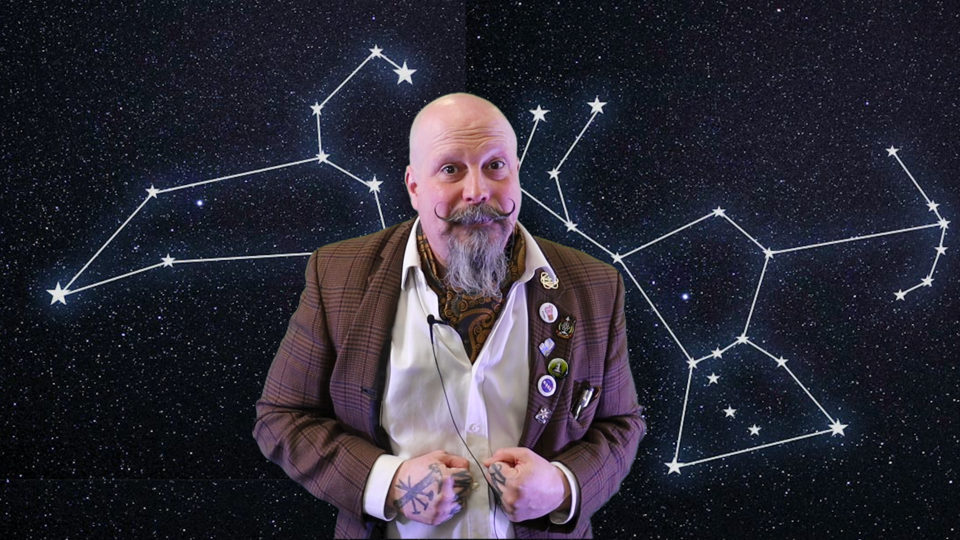Each month, we share a Star Gazing Guide presented and organized by The Great Orbax, a science communicator from the University of Guelph's department of physics and local science education advocate.
Greetings Star Gazers!
I'm a science communicator from the department of physics at the University of Guelph and I'm here to fill you in on what in on what our September night skies hold for the astro-curious out there, young and old.
Back to school makes September a busy time for most of us in this city, but this month the skies are busier than usual! We have a star going nova, a partial lunar eclipse and the Autumnal Equinox all taking place this month (see this month's Star Gazing Guide for details on all this and more), but what I wanted to talk to you about today is one the most iconic planets in our solar system, Saturn!
Few of us would be able to discern between Neptune and Venus in a lineup but, from school-age to old-age, most would be able to spot Saturn! This ringed gas giant has captured the imaginations of people for hundreds of years and right now is the perfect time to catch it in our skies.
On Sept. 8, Saturn was in opposition. This is just a fancy term used to describe when the Earth sits directly between Saturn and the Sun. What this means is that to an observer on the Earth, Saturn will be able to reflect more of the Sun's light than usual making it the brightest it gets all year. This time of the year the Sun typically sets around 9 p.m. and Saturn can be seen in the south-east sky just above the treeline at that time. If you're looking in that direction, that bright star you'll see is, in fact, not a star ... it's a planet!
With a telescope or potentially even with binoculars not only should you be able to see the rings of Saturn, but you may even be able to spot some of its larger moons like Titan or even Rhea!
I hope you enjoy this month's Star Gazing Guide. If you want to learn more, check out the September Star Gazing Guide video on the Guelph Physics YouTube channel. Not only is Star Gazing a great way to learn about space, planets and the stars and the stars but it's also a great way to spend time with other curious minds.
Until next month I wish you clear skies and I hope you take some time ... to look up.



